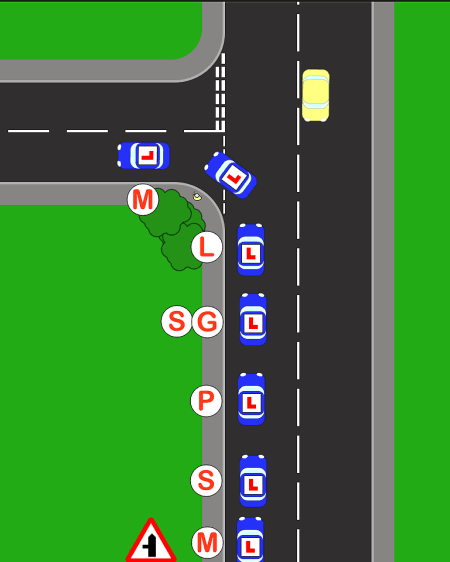Mirrors: Start by checking your interior and left mirrors. You want to know how your actions will affect other road users.
Signal: Let other road users know your intentions by giving a left signal in plenty of time. Look out for other roads on the left and avoid giving a misleading signal. If you have to move right on approach to the turn (to avoid a parked car for example) it is usually preferable to signal left after you have already moved to the right. As always, consider how your signals will be interpreted by others.
Position: In most cases it will not be necessary to change position on approach to a left turn as you will already be traveling along the left side of the road. If for any reason you are not already on the left, you should move over when you are sure it is safe. Try to approach the corner in a straight line and maintain a distance of roughly one metre from the kerb. This will ensure none of your wheels clip the kerb on the way round. Start steering to the left at the point where the kerb bends away from you.
Speed: Bring your speed down nice and early. This will give you time to assess the junction and see whether or not it is safe to turn. Early use of the brake is good because it offers the maximum control over the vehicle’s speed, as well as providing an early signal (in the form of brake lights) for anyone traveling behind you.
Look: Before you turn into the side road, make sure you look into it. You must ensure the way is clear before you commit yourself. Be especially vigilant for pedestrians who may step onto the road from either side and remember that pedestrians on the road have priority. Try to spot them early and read their body language. Use your mirrors to ensure that nobody (such as a cyclist) is trying to pass you on your left.



